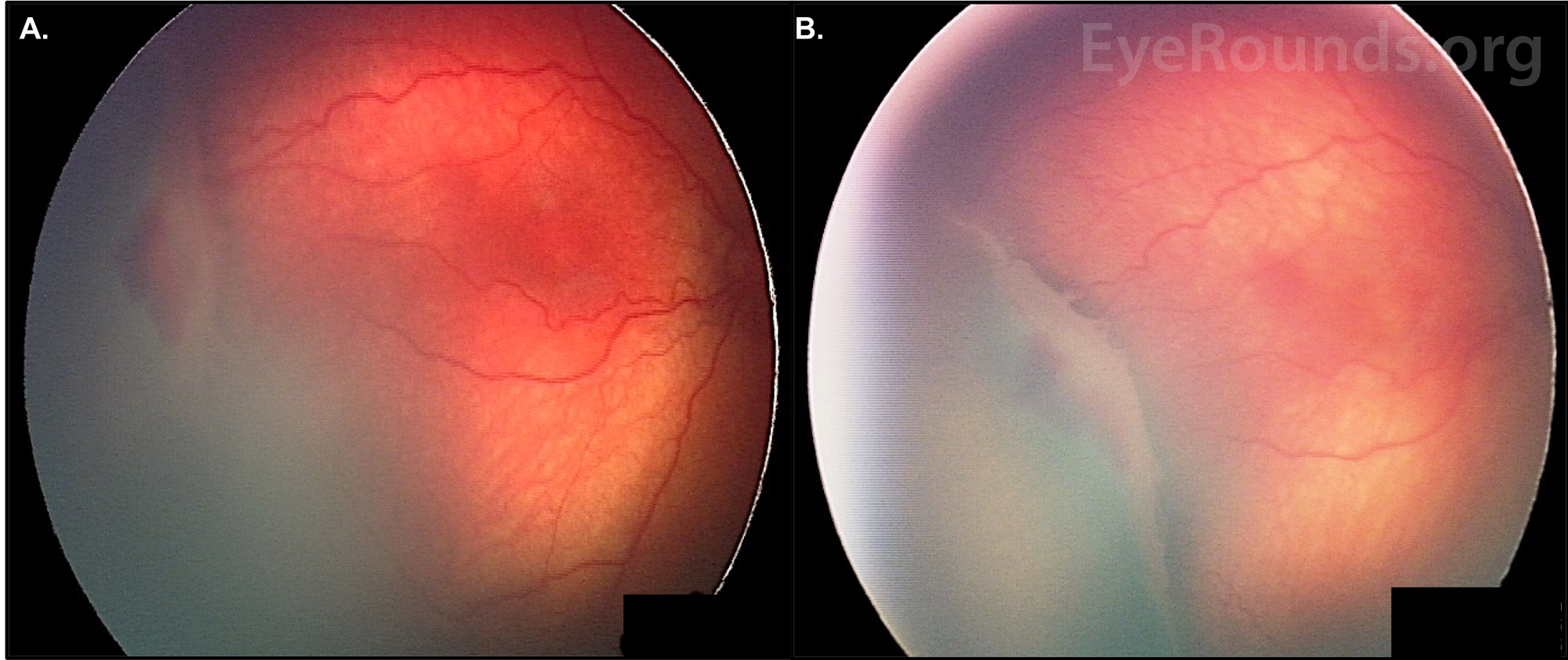 |
One downside to the increased survival rate of low birth-weight infants: more cases of ROP. Photo: University of Iowa/www.eyerounds.org. Click image to enlarge. |
A recent Ophthalmology study sought to investigate the leading causes of childhood visual impairment using the Intelligent Research in Sight (IRIS) Registry. Patients younger than or equal to 18 years of age with visual acuity measuring 20/200 or worse in their better seeing eye were included.
Of the 81,164 children with data in the IRIS Registry from 2018, 1.2% met the study’s cutoff visual acuity. Leading causes of blindness for these children were retinopathy of prematurity (ROP) in 31.3%, nystagmus in 8.1% and cataract in 6.7%. Anatomically, blindness was primarily related to impairment in the retina (47.7%), followed by the optic nerve (11.6%) and lens (10%). An astounding 52.4% of all patients had treatable causes.
The study authors noted that their results “were striking for their lack of conformity with other high Human Development Index countries.” Included in this difference is the greater representation of ROP and cataract, with ROP being the most common treatable cause of blindness observed.
Compared with a US study that looked at data from surveying those at schools for the blind, this study saw much lower incidence of cortical visual impairment (2.4%), optic nerve hypoplasia (5.1%) and higher ROP incidence. The authors believed this difference may be due to the type of children attending schools for the blind being different from the children who would attend an office-based ophthalmologist examination.
Reflective of this difference, the researchers pose that a population-based survey would be a more accurate way to assess childhood blindness; however, this kind of resource is not currently available.
Like that comparison, ROP percentage in this study was also higher than reports from the UK and prior US studies. Based on its almost one-third prevalence as seen in this data, the authors state that “the view that ROP is becoming less of a problem in high-income countries may be overstated.” They speculated that this may be due to increased survival rates of low birth-weight infants, who are at greater risk of developing severe ROP.
Further examination of the data from the IRIS Registry revealed the South of the US to be most predominant among children with legal blindness, representing 46.8%, while 10% or less patients represented each other US Census regions. Also notable was the differences seen in racial/ethnic distribution of these pediatric patients. Hispanic patients represented 22.4% compared to their broader 4.5% representation in the IRIS Registry, and Black patients made up 11.3% of blind children compared with the broader 7.8% who comprised the Registry. The authors warned that certain types of blindness may be overrepresented in certain ethnic groups, thus needing further research in this area.
Overall, this study contrasted with previous research that found cortical visual impairment and optic nerve disorders the most common childhood blindness causes, of which cannot be treated, generally speaking. But, based on the differences in prominent causes of blindness found in this study, the authors concluded with actions that can be taken.
“Public health measures should be taken to reduce the burden of blindness from these disorders, including measures such as education of healthcare professionals and family members, implementation of screening programs that adhere to the Joint Statement Screening Guidelines for ROP and/or development and deployment of scalable artificial intelligence-based telehealth screening,” they advised.
Lim HW, Pershing S, Moshfeghi DM, et al. Causes of childhood blindness in the United States using the IRIS Registry (Intelligent Research in Sight). Ophthalmology. April 8, 2023. [Epub ahead of print]. |


